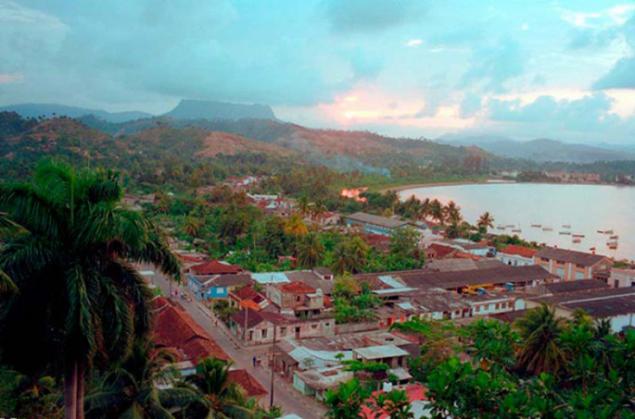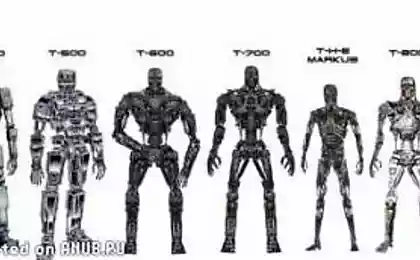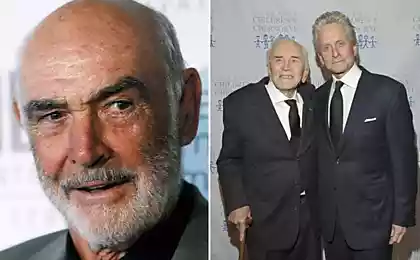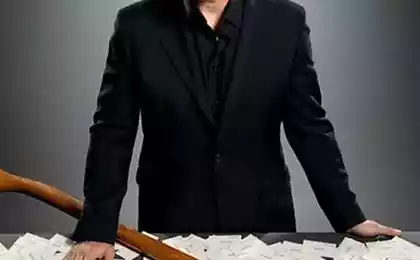845
Famous Places
Habana Vieja
This quarter is the old part of Havana. There are more than 900 buildings, with the status of historical monuments. The entire municipality of La Habana Vieja is part of UNESCO World Heritage.
Old Havana was built over five hundred years, and is interwoven a variety of architectural styles, combined a unique local flavor. Today, many of the most beautiful buildings turned into museums, but there are hotels and restaurants, and boutiques for tourists.

Jardines del Rey
The name of the archipelago translated as "Gardens of the King." Its incredibly beautiful chain of islands stretches for 200 km. There is a national park Parque Natural El Bagá. On the islands of Coco and Sayo Sayo Guillermo has a modern tourist infrastructure and Sayo Coco is famous for its white sandy beaches and excellent resorts operating on an "all inclusive". Also on the island it operates International Airport Jardines del Rey Airport.

Zapata Peninsula
The reserve is located on the peninsula is a huge swamp area of 4354, 3 sq km The flora and fauna of the area is incredibly rich, and many of the species anywhere else in the world do not occur. Zapata Swamp has the status of a "wetland of international importance", which awarded her the Ramsar Convention in 1971.

Modern Havana
The modern part of Havana, perhaps, not inferior to the original Old Havana. This whole colorful two-million metropolis, where there is dilapidated kvartaly- "barrio" with buildings of the XIX century, and samples of building socialism of the twentieth century and the outskirts, whose form has changed little since the days of the Cuban revolution. Elite areas of Havana flaunt beautiful buildings in the style of Art Deco, Modernism and Boz-art. And from government heavy buildings of the last century breathes the spirit of socialism.

Santiago de Cuba
Santiago de Cuba - the second largest city in Cuba. The city was founded in 1514 and has long been the capital of the island. Today, the city is very much a historical museum, and there is the famous Moncada barracks, which July 26, 1953 attacked a detachment of revolutionaries led by Fidel Castro that was the beginning of the Cuban Revolution.
In the vicinity of Santiago de Cuba are many places where it is convenient to engage in recreational diving.

Baracoa
This Cuban city founded in 1511, is located on the shores of the Atlantic Ocean. The city's cathedral is a wooden cross times of Christopher Columbus, so city residents claim that it was here that the great explorer, landed in Cuba.
The city is known for its production of chocolate and a well-developed tourist infrastructure. Near the town is the National Park named after Alexander von Humboldt, which is a UNESCO World Heritage Site.

Cordillera de Guaniguaniko
Lime mountain range Cordillera de Guaniguaniko begins near Havana and runs through the entire province Pilar del Rio. Pine trees and orchids limestone cliffs the locals call the "Mogotes". There are many fantastically beautiful landscapes, rare animals and plants, mysterious caves and fast mountain rivers. Here are the famous waterfalls of Salto del Karbuni and Agabama. Steep mountain slopes interspersed with picturesque valleys covered with tobacco plantations. Here lies the village of Valle de Vinales, having the status of an international historical monument.

Trinidad
This city was founded in 1514 by the Spanish conquistador Diego Velázquez. Main construction began here at the turn of the XVIII and XIX centuries, and thanks to the unique location of the city many ancient buildings and even sidewalk pavers perfectly preserved. Since 1988, the entire city is listed in the list of UNESCO World Heritage Site.

Camagüey
This long-suffering city, which was also founded in 1514 by Diego Velasquez, throughout its history countless times exposed to pirate raids and destruction. As a result, the exhausted people were forced to abandon the original settlement of the town and move away inland. Today there preserved many historic buildings and churches. There have always produced the famous huge clay jugs "tinahony" for the storage of water. Today tinahony are the main decoration and a symbol of the city.

©
This quarter is the old part of Havana. There are more than 900 buildings, with the status of historical monuments. The entire municipality of La Habana Vieja is part of UNESCO World Heritage.
Old Havana was built over five hundred years, and is interwoven a variety of architectural styles, combined a unique local flavor. Today, many of the most beautiful buildings turned into museums, but there are hotels and restaurants, and boutiques for tourists.

Jardines del Rey
The name of the archipelago translated as "Gardens of the King." Its incredibly beautiful chain of islands stretches for 200 km. There is a national park Parque Natural El Bagá. On the islands of Coco and Sayo Sayo Guillermo has a modern tourist infrastructure and Sayo Coco is famous for its white sandy beaches and excellent resorts operating on an "all inclusive". Also on the island it operates International Airport Jardines del Rey Airport.

Zapata Peninsula
The reserve is located on the peninsula is a huge swamp area of 4354, 3 sq km The flora and fauna of the area is incredibly rich, and many of the species anywhere else in the world do not occur. Zapata Swamp has the status of a "wetland of international importance", which awarded her the Ramsar Convention in 1971.

Modern Havana
The modern part of Havana, perhaps, not inferior to the original Old Havana. This whole colorful two-million metropolis, where there is dilapidated kvartaly- "barrio" with buildings of the XIX century, and samples of building socialism of the twentieth century and the outskirts, whose form has changed little since the days of the Cuban revolution. Elite areas of Havana flaunt beautiful buildings in the style of Art Deco, Modernism and Boz-art. And from government heavy buildings of the last century breathes the spirit of socialism.

Santiago de Cuba
Santiago de Cuba - the second largest city in Cuba. The city was founded in 1514 and has long been the capital of the island. Today, the city is very much a historical museum, and there is the famous Moncada barracks, which July 26, 1953 attacked a detachment of revolutionaries led by Fidel Castro that was the beginning of the Cuban Revolution.
In the vicinity of Santiago de Cuba are many places where it is convenient to engage in recreational diving.

Baracoa
This Cuban city founded in 1511, is located on the shores of the Atlantic Ocean. The city's cathedral is a wooden cross times of Christopher Columbus, so city residents claim that it was here that the great explorer, landed in Cuba.
The city is known for its production of chocolate and a well-developed tourist infrastructure. Near the town is the National Park named after Alexander von Humboldt, which is a UNESCO World Heritage Site.

Cordillera de Guaniguaniko
Lime mountain range Cordillera de Guaniguaniko begins near Havana and runs through the entire province Pilar del Rio. Pine trees and orchids limestone cliffs the locals call the "Mogotes". There are many fantastically beautiful landscapes, rare animals and plants, mysterious caves and fast mountain rivers. Here are the famous waterfalls of Salto del Karbuni and Agabama. Steep mountain slopes interspersed with picturesque valleys covered with tobacco plantations. Here lies the village of Valle de Vinales, having the status of an international historical monument.

Trinidad
This city was founded in 1514 by the Spanish conquistador Diego Velázquez. Main construction began here at the turn of the XVIII and XIX centuries, and thanks to the unique location of the city many ancient buildings and even sidewalk pavers perfectly preserved. Since 1988, the entire city is listed in the list of UNESCO World Heritage Site.

Camagüey
This long-suffering city, which was also founded in 1514 by Diego Velasquez, throughout its history countless times exposed to pirate raids and destruction. As a result, the exhausted people were forced to abandon the original settlement of the town and move away inland. Today there preserved many historic buildings and churches. There have always produced the famous huge clay jugs "tinahony" for the storage of water. Today tinahony are the main decoration and a symbol of the city.

©
























